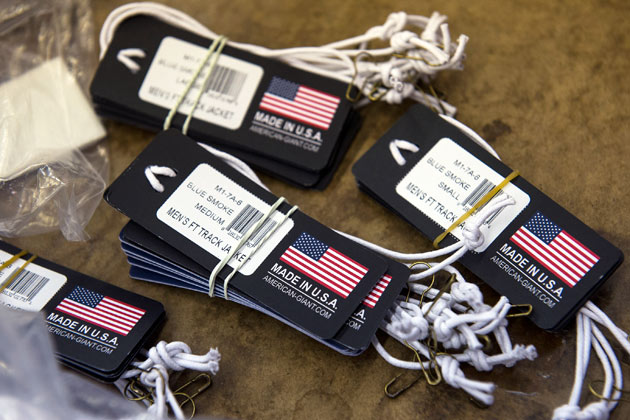Sell More Shoppers on Buying Made in USA Clothing
Succeeding as a small business involves identifying your company’s unique value proposition and articulating it, he notes. Shama Kabani, chief executive of Marketing Zen Group, a Dallas marketing business, agrees. “You have to be careful in [the] marketing of anything [of] becoming a one-trick pony. There’s got to be more about your products that make them sell. For instance, if your customer service and shipping [are] not worked out, being made in the U.S.A. won’t help at all,” she says.
What you can do is reinforce customers’ interest in and loyalty to your clothing line by emphasizing that you are employing American workers to produce durable, well-made goods that meet the high standards of U.S. consumers.
“Tell your employees’ stories and have them tell the story of your brand,” Barnes suggests, making sure your message is honest and authentic, not “fabricated by some PR contractor.” You might come up with a video featuring your employees thanking customers for supporting them, their families, and their communities, for instance. “People are more likely to pay $10 extra for something if they see the impact their support makes,” Barnes says.
Something that showcases local craftsmanship could also tap into the artisanal buying trend that has consumers favoring small local businesses.
Transparency and integrity will be extremely important in such a marketing campaign, Kabani says: “You don’t want to say, ‘Buy from us because we’re made in the U.S.’ and then have someone find out you’re using illegal workers in a sweat shop. You have to have a true sense of why it matters to you, or eventually it looks like a gimmick.”
Once your message is perfected, send it out over social media and video-sharing sites and to bloggers who write about your industry and its products. “Make sure you’re telling the story, giving them a link, and making it easy for them to share it,” Kabani says.
That means putting “like” or “share” buttons on all your Web pages, including your shopping cart if you’re selling online. Making it easy for your customers to let their Facebook (FB) friends and Twitter contacts know they have just purchased clothing from you is a simple way to boost your visibility, but it’s a step often overlooked by smaller companies, she says.




I want one or two of the